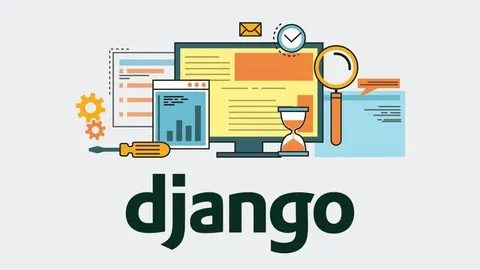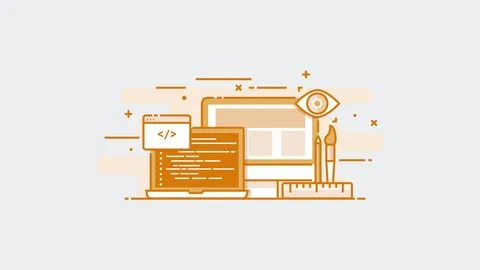
Django Multi Vendor Restaurant - The Real Django Experience 
Django Multi Vendor Restaurant provides users with a unique experience, allowing them to search for nearby restaurants and explore their offerings. With its location-based search and Python Django technology, users can enjoy the real Django experience. ▼
ADVERTISEMENT
Course Feature
![]() Cost:
Cost:
Free
![]() Provider:
Provider:
Udemy
![]() Certificate:
Certificate:
No Information
![]() Language:
Language:
English
Course Overview
❗The content presented here is sourced directly from Udemy platform. For comprehensive course details, including enrollment information, simply click on the 'Go to class' link on our website.
Updated in [March 06th, 2023]
This course provides an in-depth look at the Django Framework and how to use it to create a multi-vendor restaurant platform. Students will learn how to purchase and implement a template, configure a PostgreSQL database, create custom user models, media files, and Django signals, and create user registration and authentication functionalities. Additionally, students will learn how to create vendor approval by admin, dashboards, restaurant profile forms, and custom validators. They will also learn how to implement Google Autocomplete fields, create menu builder category and food item CRUD functionalities, and implement a marketplace.
Students will also learn how to create cart functionalities with AJAX requests, basic and smart search functionalities, and location-based search functionalities with nearby restaurants. They will learn how to get the user's current location and show nearby restaurants on the homepage, create dynamic business hours modules with AJAX, and dynamic tax modules. Additionally, students will learn how to create orders models and checkout pages, place orders and generate order numbers, and implement PayPal and RazorPay payment gateways.
Finally, students will learn how to implement many-to-many relationships, integrate email templates, and make the site mobile-friendly (responsive).
[Applications]
After completing this course, students can apply their knowledge to create a multi-vendor restaurant platform using Python and Django Framework. They will be able to purchase and implement templates, configure a PostgreSQL database, create custom user models, media files, and Django signals. They will also be able to create user registration, Django messages and errors, vendor registration and authentication functionalities, token verification and email configuration, vendor approval by admin, dashboards, restaurant profile forms, custom validators, Google Autocomplete fields, menu builder category and food item CRUD functionalities, marketplace implementation, cart functionalities with AJAX requests, basic and smart search functionalities, location-based search functionalities with nearby restaurants, dynamic business hours module with AJAX, dynamic tax module, orders model and checkout page, place orders and generate order numbers, implement PayPal and RazorPay payment gateways, after order functionalities, integrate email templates, and make the site mobile-friendly (responsive).
[Career Paths]
1. Django Developer: Django Developers are responsible for developing and maintaining web applications using the Django framework. They must have a strong understanding of Python, HTML, CSS, and JavaScript. They must also be familiar with databases, such as PostgreSQL, and be able to create and maintain complex web applications. As the demand for web applications continues to grow, the demand for Django Developers is expected to increase.
2. Database Administrator: Database Administrators are responsible for managing and maintaining databases. They must have a strong understanding of database systems, such as PostgreSQL, and be able to create and maintain complex databases. As the demand for web applications continues to grow, the demand for Database Administrators is expected to increase.
3. Web Designer: Web Designers are responsible for creating and maintaining websites. They must have a strong understanding of HTML, CSS, and JavaScript. They must also be familiar with web design tools, such as Adobe Photoshop and Adobe Illustrator. As the demand for web applications continues to grow, the demand for Web Designers is expected to increase.
4. DevOps Engineer: DevOps Engineers are responsible for managing and maintaining web applications. They must have a strong understanding of web technologies, such as Python, HTML, CSS, and JavaScript. They must also be familiar with DevOps tools, such as Docker and Kubernetes. As the demand for web applications continues to grow, the demand for DevOps Engineers is expected to increase.
[Education Paths]
1. Bachelor of Science in Computer Science: This degree program provides students with a comprehensive understanding of computer science principles and their application in the development of software and hardware systems. Students learn about programming languages, operating systems, computer networks, and database management. They also gain experience in problem-solving, critical thinking, and communication. This degree is ideal for those interested in pursuing a career in software engineering, web development, or computer systems analysis.
2. Master of Science in Computer Science: This degree program provides students with an advanced understanding of computer science principles and their application in the development of software and hardware systems. Students learn about advanced programming languages, operating systems, computer networks, and database management. They also gain experience in problem-solving, critical thinking, and communication. This degree is ideal for those interested in pursuing a career in software engineering, web development, or computer systems analysis.
3. Bachelor of Science in Information Technology: This degree program provides students with a comprehensive understanding of information technology principles and their application in the development of software and hardware systems. Students learn about programming languages, operating systems, computer networks, and database management. They also gain experience in problem-solving, critical thinking, and communication. This degree is ideal for those interested in pursuing a career in software engineering, web development, or computer systems analysis.
4. Master of Science in Information Technology: This degree program provides students with an advanced understanding of information technology principles and their application in the development of software and hardware systems. Students learn about advanced programming languages, operating systems, computer networks, and database management. They also gain experience in problem-solving, critical thinking, and communication. This degree is ideal for those interested in pursuing a career in software engineering, web development, or computer systems analysis.
The demand for computer science and information technology professionals is growing rapidly, and these degree paths are becoming increasingly popular. As technology advances, the need for skilled professionals in these fields is expected to continue to grow. Additionally, the development of new technologies such as artificial intelligence, machine learning, and blockchain is creating new opportunities for those with the right skills.
Course Syllabus
Purchse & Implement template
PostgreSQL Database Configuration
Custom user model, Media files & Django signals
User Registration, Django messages and errors
Vendor registration and authentication functionalities
Token verification & Email configuration
Vendor approval by admin, dashboards
Make restaurant profile form & custom validators
Implement Google Autocomplete field
Menu Builder - Category CRUD functionalities
Menu Builder - Food Items CRUD functionalities
Marketplace Implementation
Cart functionalities with AJAX request
Cart functionalities with frontend
Basic Search & Smart search functionalities
Location based search functionalities with nearby restaurants
Get user's current location & show nearby restaurant on homepage
Dynamic Business hours module with AJAX
Dynamic Tax Module
Customers app and profile building
Orders model and checkout page
Place order and generate order number
Implement PayPal payment gateway
After order functionalities
Implement RazorPay Payment Gateway
Customer Dashboard
ManyToMany Relationship & Vendor Dashboard
Custom middleware, total revenue per vendor, current month's revenue
Integrate Email Templates
Make the site mobile-friendly (responsive)
Project Deployment on Linode Virtual Private Server
Pros & Cons

Detailed explanation

Minimum bugs

Great for beginners

Plenty of new features

Professional teacher

Immediate error correction

Doubtclearing support

No classbased views
Course Provider

Provider Udemy's Stats at AZClass
Django Multi Vendor Restaurant - The Real Django Experience provides users with a unique experience that allows them to search for nearby restaurants and explore their offerings. Learners will learn how to purchase and implement templates, configure a PostgreSQL database, create custom user models, media files, and Django signals, and create user registration and authentication functions. They will also learn how to create vendor registrations and approvals through the admin, dashboard, restaurant profile form, custom validators, and Google autocomplete fields. Finally, learners will learn how to make a website mobile-friendly (responsive). This course is perfect for those who want to learn web development using Python and the Django framework.
Discussion and Reviews
0.0 (Based on 0 reviews)
Explore Similar Online Courses

Payroll Processing in India - An Introduction

How to Street Dance: Waving

Python for Informatics: Exploring Information

Social Network Analysis

Introduction to Systematic Review and Meta-Analysis

The Analytics Edge

DCO042 - Python For Informatics

Causal Diagrams: Draw Your Assumptions Before Your Conclusions

Whole genome sequencing of bacterial genomes - tools and applications

Django 22 & Python The Ultimate Web Development Bootcamp

Complete Python Django Single-Page App


Start your review of Django Multi Vendor Restaurant - The Real Django Experience